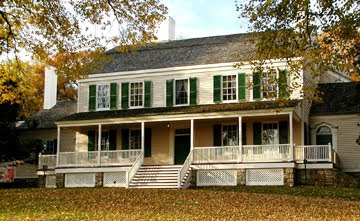 Historic Cherry Hill and Schuyler Mansion State Historic Site will present “Shades of Gentility”, a lecture on refinement given by Historic Cherry Hill’s curator, Deborah Emmons-Andarawis. Emmons-Andarawis will explore the homes and possessions of three of 18th century Albany’s leading citizens – Philip Van Rensselaer, Stephen Van Rensselaer III, and Philip Schuyler – in order to uncover the subtleties of class in early New York. This lecture is part of the special series: Got Class? Status and Power in Early America, a collaborative effort between Historic Cherry Hill and Schuyler Mansion State Historic Site. The Got Class? Series is funded by the New York Council for the Humanities.
Historic Cherry Hill and Schuyler Mansion State Historic Site will present “Shades of Gentility”, a lecture on refinement given by Historic Cherry Hill’s curator, Deborah Emmons-Andarawis. Emmons-Andarawis will explore the homes and possessions of three of 18th century Albany’s leading citizens – Philip Van Rensselaer, Stephen Van Rensselaer III, and Philip Schuyler – in order to uncover the subtleties of class in early New York. This lecture is part of the special series: Got Class? Status and Power in Early America, a collaborative effort between Historic Cherry Hill and Schuyler Mansion State Historic Site. The Got Class? Series is funded by the New York Council for the Humanities.
This free event will be held on Saturday, October 15th at 3:00pm at First Church in Albany. For more information about this event or the Got Class? Series call Historic Cherry Hill at (518) 434-4791 or email [email protected].
Historic Cherry Hill, located at 523 ? South Pearl Street in Albany, NY, is a non-profit historic house museum built in 1787 and was lived in continuously by five generations of the same family until the death of the last family member in 1963. The museum is currently undergoing a large restoration project and offers a Behind-the-Scenes Restoration tour from April through December, on Wednesday afternoons at 1, 2 and 3pm and Saturday afternoons at 2 and 3pm. Admission is $5 for adults, $4 for seniors and college students and $2 for children between the ages of 12 and 18. An Architecture Hunt for Families is also offered on Saturdays between 1 and 2pm at the admission price of $2 for adults and $1 for children ages 6-11. Visit Historic Cherry Hill’s website at www.historiccherryhill.org for more information.
Schuyler Mansion State Historic Site, located at 32 Catherine Street in Albany, NY, was once the home of Philip J. Schuyler, the renowned Revolutionary War General, US Senator and business entrepreneur. He and his wife Catharine Van Rensselaer descended from affluent and powerful Dutch families. Together they raised eight children in this home. Throughout the Schuyler family occupancy from 1763-1804, the mansion was the site of military strategizing, political hobnobbing, elegant social affairs, and an active family life. Guided tours are available mid-May through October 31st, and are offered on the hour, Wednesday through Sunday, 11:00am to 4:00pm. Admission is $5 for adults, $4 for seniors and college students. Children under 12 are free. Visit www.schuylerfriends.org for more information about Schuyler Mansion State Historic Site.






